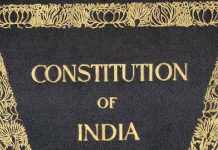This article has been written by Anuj Sharma, pursuing a Certificate Course in Introduction to Legal Drafting: Contracts, Petitions, Opinions & Articles from LawSikho. It has been edited by Zigishu (Associate, LawSikho).
It has been published by Rachit Garg.
Table of Contents
Introduction
Humans, since time immemorial, have had to contend with conflicts among themselves. An ‘ideal state’, free of conflict, is inconceivable. The hallmark of a mature civilization is not the absence of conflicts but the institutions it develops to resolve conflicts amicably. In modern times, marked by globalisation and integration of economies, protracted litigation extracts unacceptable costs in terms of time and financial resources. In several countries, including India, judicial systems are overburdened with an unmanageable backlog of cases. As per a recent report, over 4.6 Crores cases are pending in various courts across the country. On top of this, according to the written reply of Law Minister Kiren Rijiju in Rajya Sabha, India has only about 21 judges per 10 Lakh people. The situation, to say the least, is alarming; it calls for out of the box thinking.
One significant advance in this direction has been the concept of Alternative Dispute Resolutions (ADR), a generic term that includes arbitration, conciliation, mediation, adjudication and expert determination. The judicial system – judges, legal professionals, the statutory Law Commission mandated with the task of suggesting reforms to the legal system as also law makers – has been exploring and experimenting with newer mechanisms to address conflicts. It is a work in progress.
Mediation, one of the most used modes of ADR across the globe, has become the subject of a fair amount of debate in India. Mediation is a non-adversarial dispute resolution process whereby dispute is solved by the parties with the assistance of a neutral third party known as mediator. The role of mediator is confined to assisting the parties in resolving the dispute; the mediator does not take on the role of judge. Being a flexible and non-adversarial dispute resolution option, mediation may help keep the relationship between warring parties intact. Despite all of such attributes, so far Mediation has not been used in proportion to its full potential as an effective ADR tool.
Mediation in India
In India, resolution of disputes through consultation and mediation, has had a fairly long history. Anecdotal evidence of mediation abounds even in rural areas where ‘socio-judicial mechanism’ in the form of Panchayat could rope in village elders to resolve disputes. In recent times, in a more formal sense, the country’s judicial system embraced different modes of ADRs at different stages. The Industrial Dispute Act 1947, provided for mediation. A watershed moment for ADR was amendment to the Code of Civil Procedure, 1908, whereby Section 89 was inserted in 1999 to enable courts to refer any pending case to ADR.
This section needs to be quoted in full.
[89. Settlement of disputes outside the Court.–(1) Where it appears to the Court that there exist elements of a settlement which may be acceptable to the parties, the Court shall formulate the terms of settlement and give them to the parties for their observations and after receiving the observations of the parties, the Court may reformulate the terms of a possible settlement and refer the same for
(a) arbitration;
(b) conciliation;
(c) judicial settlement including settlement through Lok Adalat: or
(d) mediation.
(2) Were a dispute has been referred–
(a) for arbitration or conciliation, the provisions of the Arbitration and Conciliation Act, 1996 (26 of 1996) shall apply as if the proceedings for arbitration or conciliation were referred for settlement under the provisions of that Act;
(b) to Lok Adalat, the Court shall refer the same to the Lok Adalat in accordance with the provisions of sub-section (1) of section 20 of the Legal Services Authority Act, 1987 (39 of 1987) and all other provisions of that Act shall .apply in respect of the dispute so referred to the Lok Adalat;
(c) for judicial settlement, the Court shall refer the same to a suitable institution or person and such institution or person shall be deemed to be a Lok Adalat and all the provisions of the Legal Services Authority Act, 1987 (39 of 1987) shall apply as if the dispute were referred to a Lok Adalat under the provisions of that Act;
(d) for mediation, the Court shall effect a compromise between the parties and shall follow such procedure as may be prescribed.]
Voluntary Mediation
As is evident in sub clause (1) cited above, power of courts qua mediation was circumscribed: court could refer matters for ADR where it appears that “there exist elements of a settlement which may be acceptable to the parties”. If any major party to the dispute categorically expressed its unwillingness to submit to ADR, courts had no option but to proceed with the suit. Thus, in effect, even under the new law, litigating parties could veto suggestions by court to try ADR.
Litigation has been the primary choice to get matters adjudicated in India. As of now, barring some statutory provisions, mediation is primarily a voluntary ADR option. Over the last couple of decades, Indian lawmakers and the judicial system has been pro-actively adopting and promoting ADRs. It is being increasingly suggested that in view of the courts being overburdened with backlog of cases, ADR should be the first option; litigation should be resorted to only in those cases where ADR mechanism does not lead to settlement of dispute. The question is: Should mediation be made mandatory?
Hitherto, in consonance with Indian laws, Indian courts actively referred only certain types of cases to mediation. These included disputes among relatives and family members. In recent times, Mediation was formally accorded importance in, besides aforementioned amendment of 1999 in the Code of Civil Procedure, among other statutes, Consumer Protection Act 2019 (Sec.37-38, Chapter V) and The Companies Act 2013 (Sec. 442).
Push for Mandatory mediation
Mediation, thus far, has had limited success. However, it is being seen as a potent tool for dispute resolution. Many voices in the legal fraternity have argued that against the backdrop of pendency of suits in Indian courts, mediation should be made mandatory. The 129th Law Commission of India weighed in favour of expanding the role of mandatory mediation. A bold and defining step in this direction was the amendment of The Commercial Courts Act 2015 whereby new Section 12A was added in 2018 which made it obligatory for parties to explore mediation before approaching to court.
“12A. Pre-Institution Mediation and Settlement—
(1) A suit, which does not contemplate any urgent interim relief under this Act, shall not be instituted unless the plaintiff exhausts the remedy of pre-institution mediation in accordance with such manner and procedure as may be prescribed by rules made by the Central Government.”
The concept of mandatory mediation seems to have got a fillip from the Apex Court. In a landmark judgement in M/S. Afcons Infra. Ltd. & Anr vs M/S Cherian Varkey Construction Ltd & Anr, the Supreme Court of India widened the scope of sending disputes to ADRs. It held that in the absence of consent regarding Arbitration & Conciliation, the court may, without consent of the parties, refer the case to other ADRs methods which include mediation also. Per the judgement:
“ 26. If the parties are not agreeable for either arbitration or conciliation, both of which require consent of all parties, the court has to consider which of the other three ADR processes (Lok Adalat, Mediation and Judicial Settlement) which do not require the consent of parties for reference, is suitable and appropriate and refer the parties to such ADR process.”
Thus, in Afcons Infra supra, India’s Apex Court has, albeit cautiously, given the courts fair degree of latitude to firmly nudge litigants towards ADR.
Caution
While it may be tempting to push for mandatory mediation to reduce the backlog of pending cases in India, it is necessary to bear in mind that thus far, far by and large, litigants have reposed more faith in litigation than mediation. Furthermore, since mediation has not been resorted to much, there is also a dearth of professional mediators. Also, participation in mediation in good faith is sine qua non for fair, successful mediation. If one party has a strong case and another party is using the mediation as a tool to frustrate it or buy some time to compel for some sort of settlement, the mandatory provision would become a tool of coercion. In the latter case, i.e. where a party is abusing the process of law to coerce the opposite party to submit to an ‘unfair deal’, mediation could be misused as a sword to perpetuate injustice. It has been aptly stated in in Halsey v Milton Keynes General NHS Trust [2004] EWCA Civ 576:
“10. If the court were to compel parties to enter into a mediation to which they objected, that would achieve nothing except to add to the costs to be borne by the parties, possibly postpone the time when the court determines the dispute and damage the perceived effectiveness of the ADR process. If a judge takes the view that the case is suitable for ADR, then he or she is not, of course, obliged to take at face value the expressed opposition of the parties. In such a case, the judge should explore the reasons for any resistance to ADR. But if the parties (or at least one of them) remain intransigently opposed to ADR, then it would be wrong for the court to compel them to embrace it.”
Mediation Act
In Indian law, voluntariness is writ large on the landscape of mediation. Indian Courts and various stakeholders time and again have raised issues regarding giving Mediation statutory status essentially to bring uniformity. Recently The Mediation bill 2021 was introduced in Rajya Sabha, which has the provision of mandatory mediation for civil and Commercial suits. As per its section 6 (1).
“Subject to other provisions of this Act, whether any mediation agreement exists or not, any party before filing any suit or proceedings of civil or commercial nature in any court, shall take steps to settle the disputes by pre-litigation mediation in accordance with the provisions of this Act.”
The ‘Mediation Bill 2021’ has been referred to the Parliamentary Standing Committee’s public grievances department for examination. It was long overdue, and it is hoped that the Bill will become a law. As stated recently by Chief Justice N V Ramana, there are about 43,000 mediation centres across India. The data suggests that since 2005, nearly 3.22 million cases have been referred and nearly 1 million cases have been settled by mediation up to March 2021. The numbers, impressive on the face of it, do not shed any light on the details of the process of mediation, the quality of mediation.
All in all, it is high time India accorded more importance to Mediation in its overall legal architecture as it also established mechanisms and training of advocates to make the most out of upcoming legislation.
Students of Lawsikho courses regularly produce writing assignments and work on practical exercises as a part of their coursework and develop themselves in real-life practical skills.
LawSikho has created a telegram group for exchanging legal knowledge, referrals, and various opportunities. You can click on this link and join:
Follow us on Instagram and subscribe to our YouTube channel for more amazing legal content.
 Serato DJ Crack 2025Serato DJ PRO Crack
Serato DJ Crack 2025Serato DJ PRO Crack










 Allow notifications
Allow notifications



